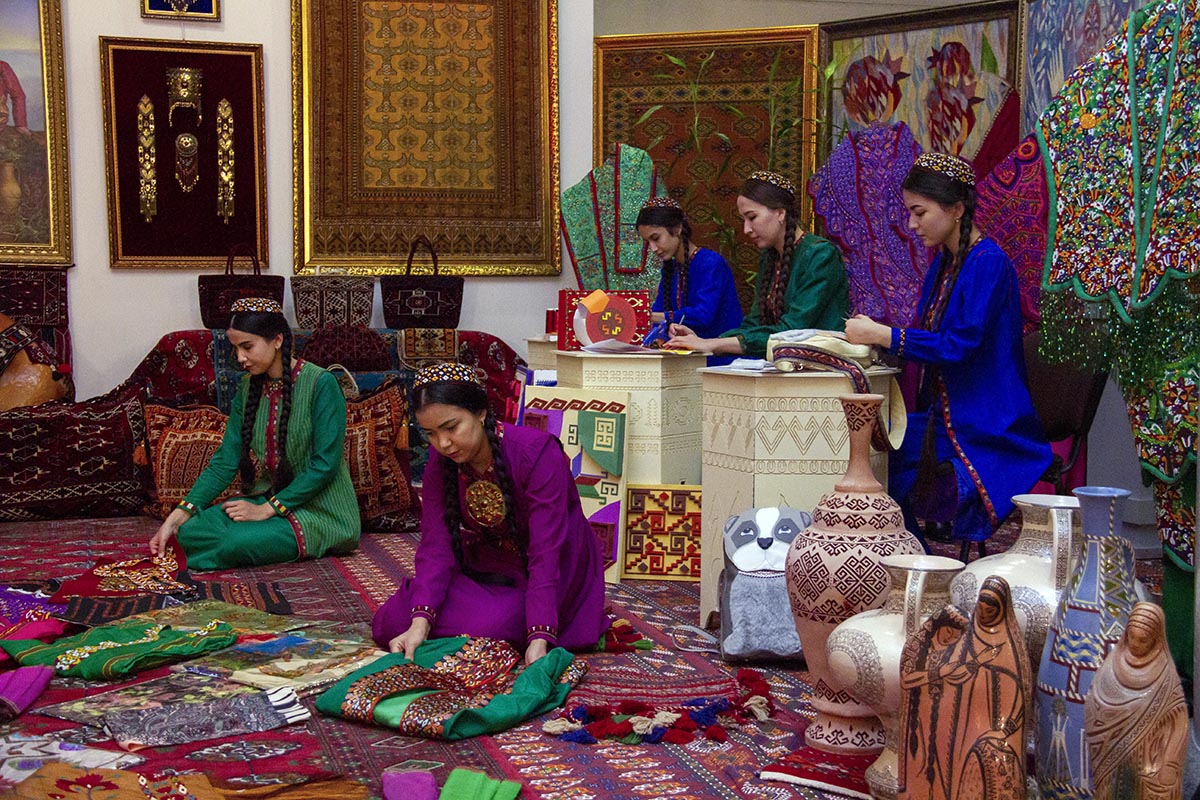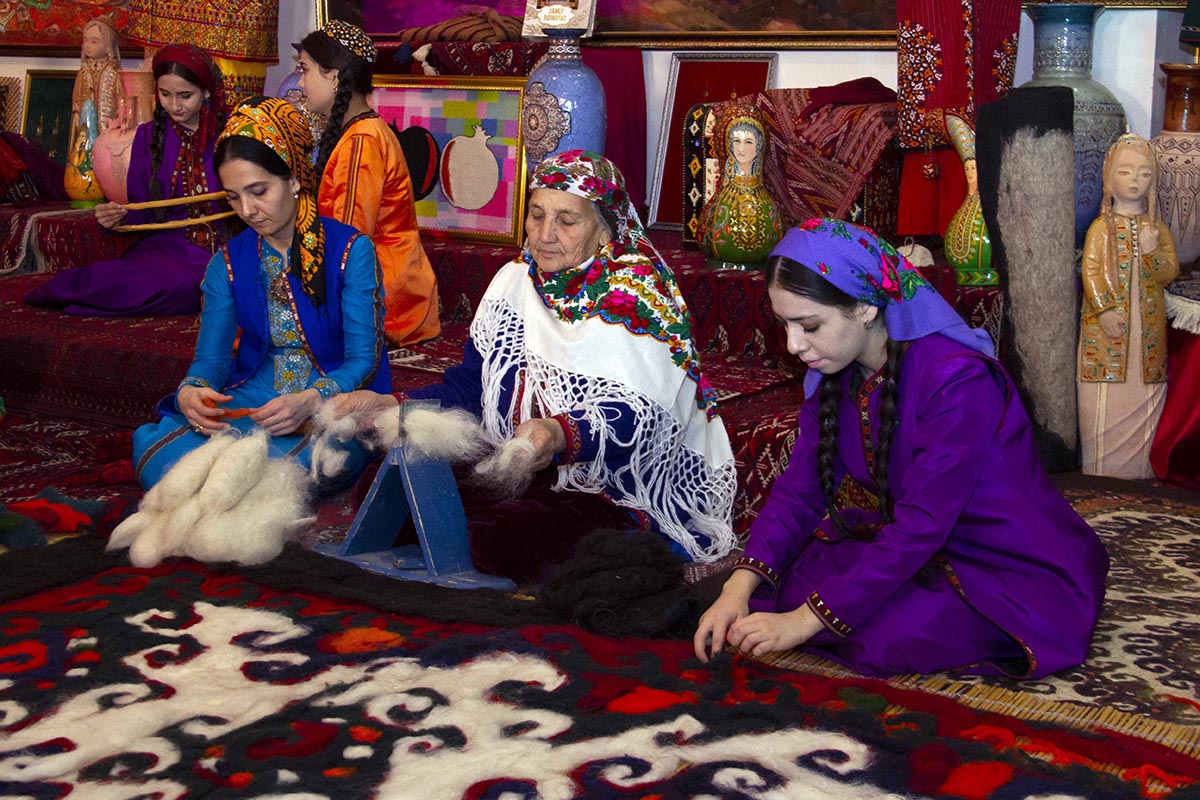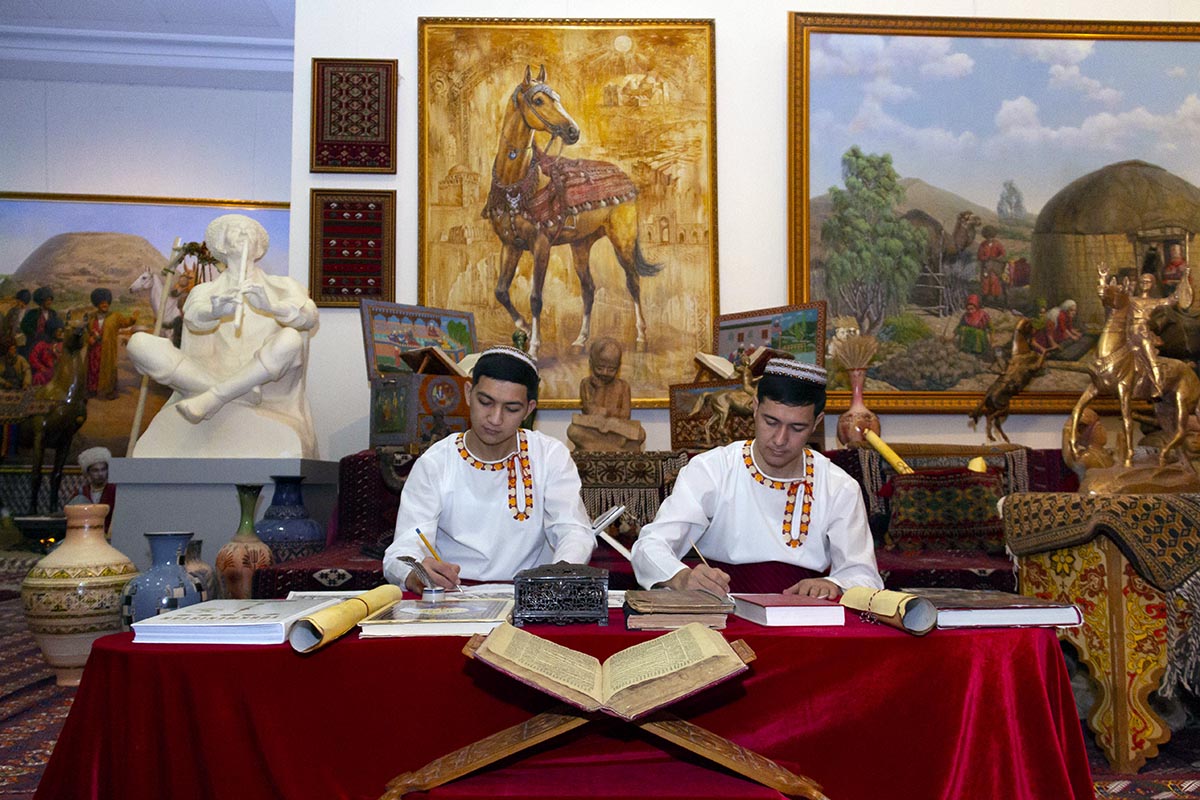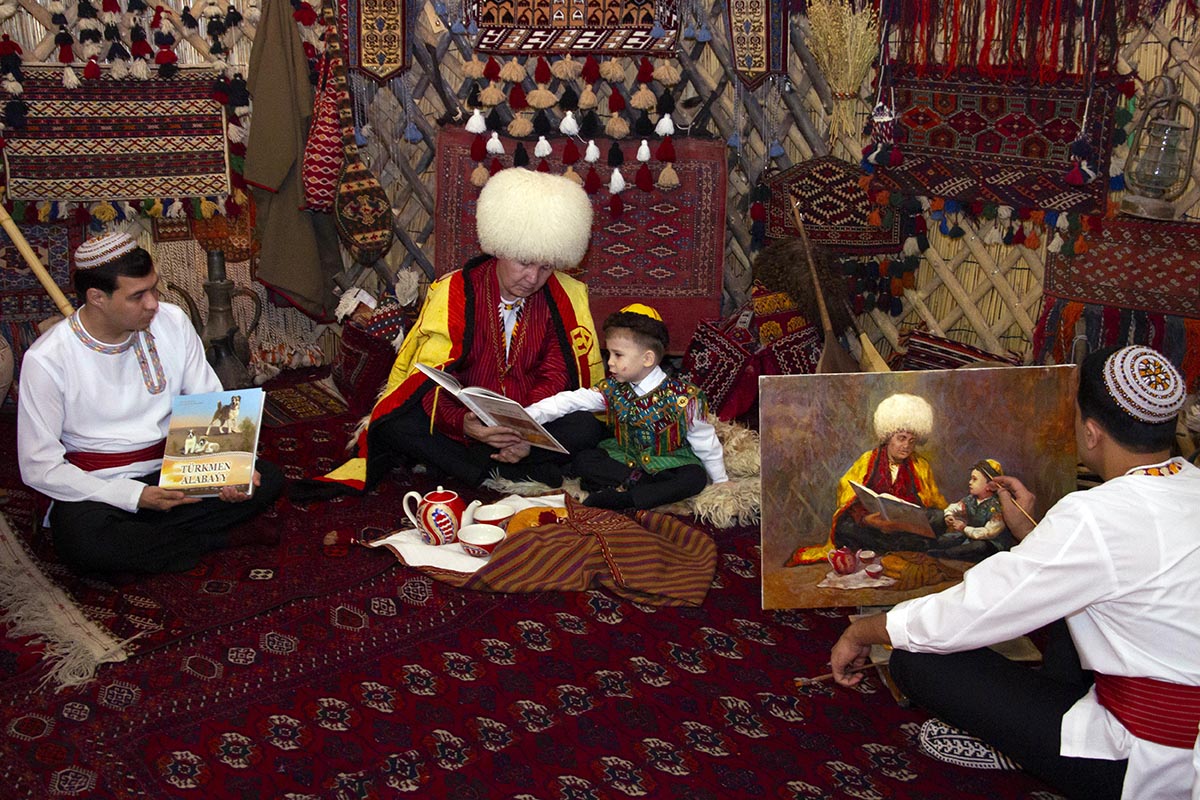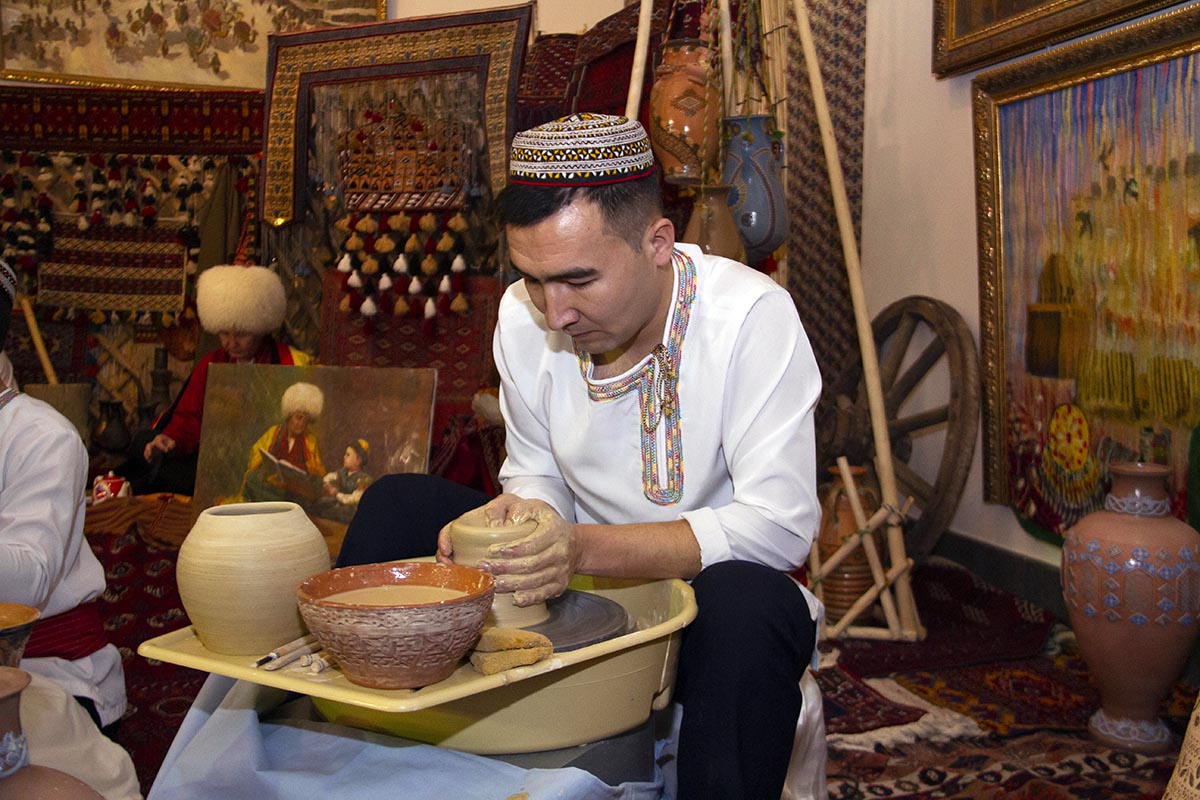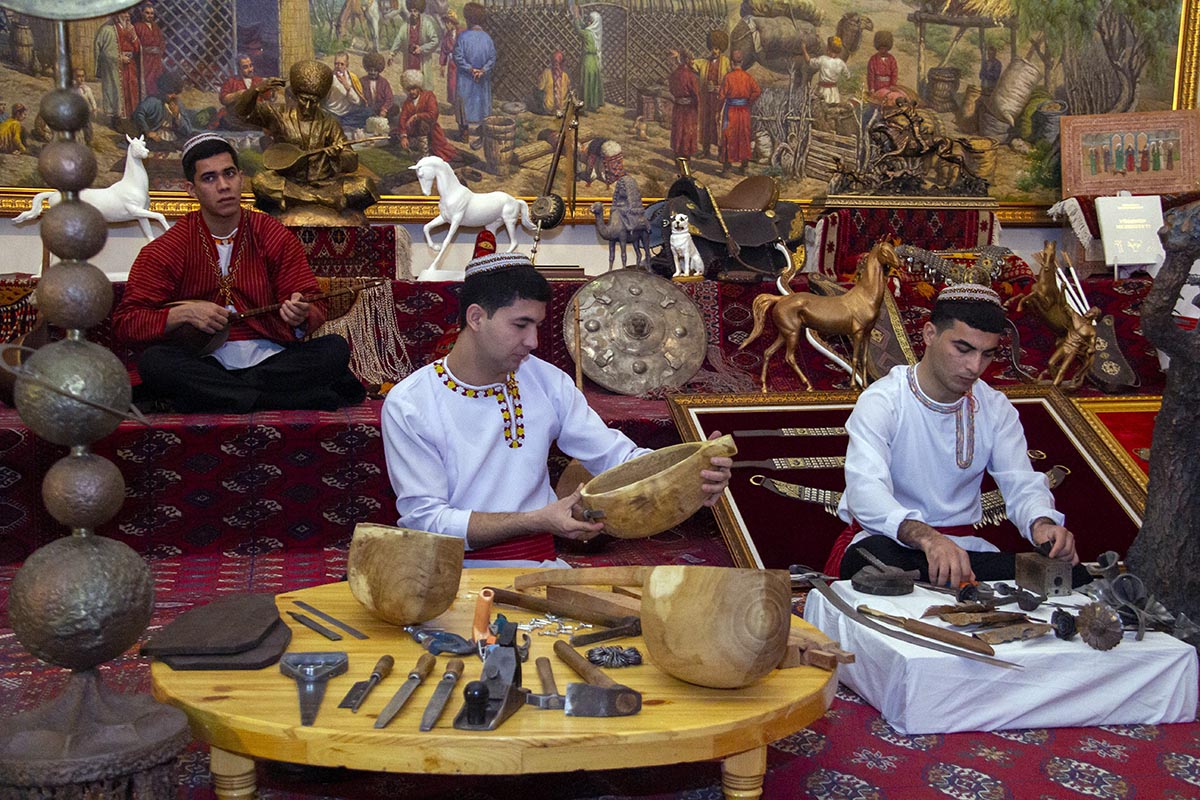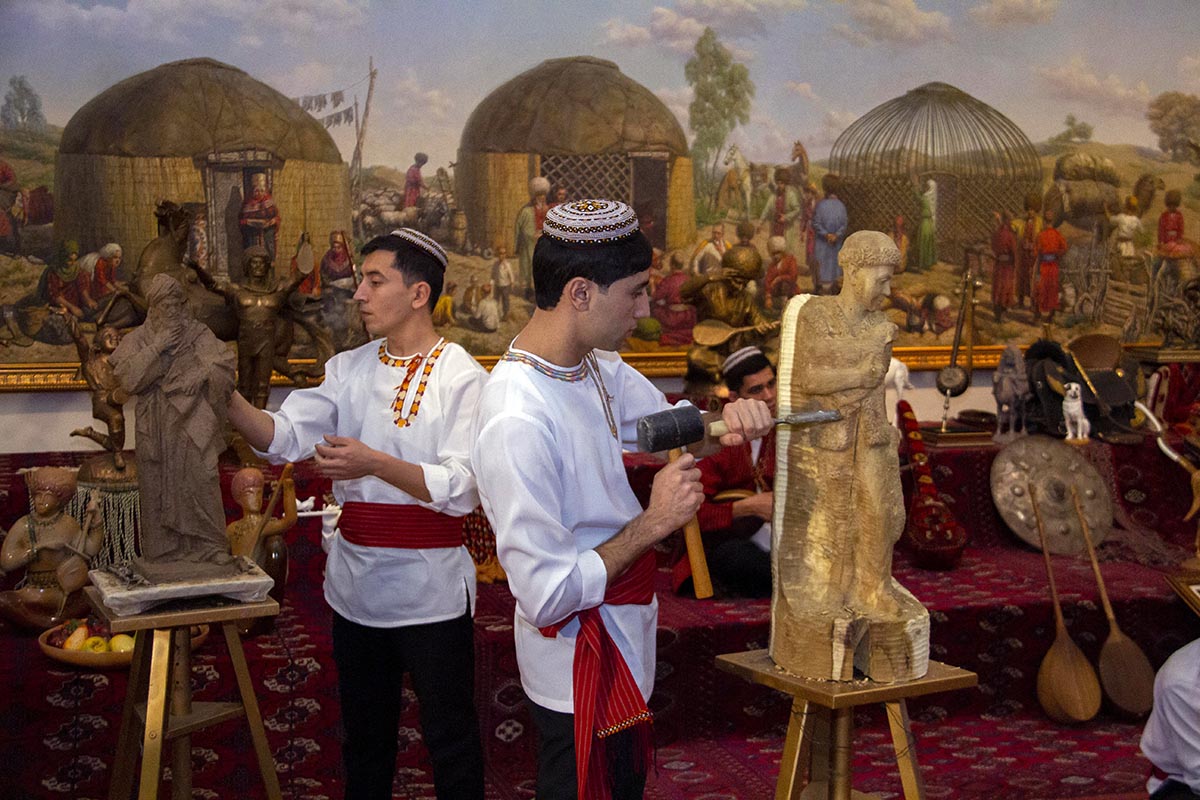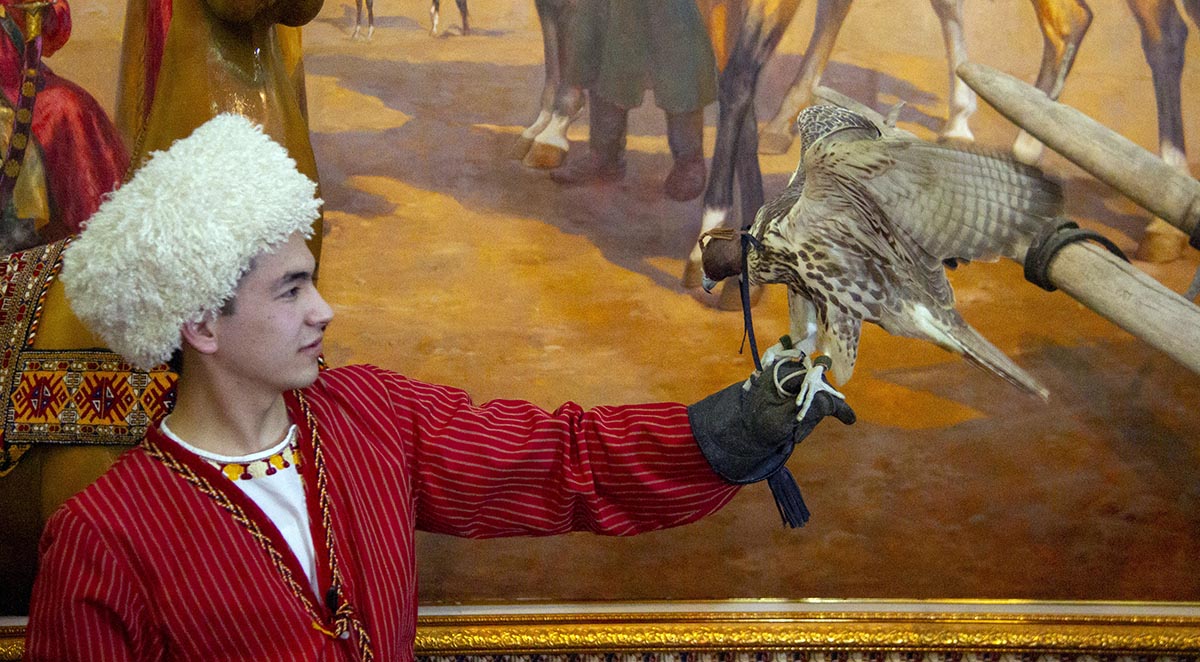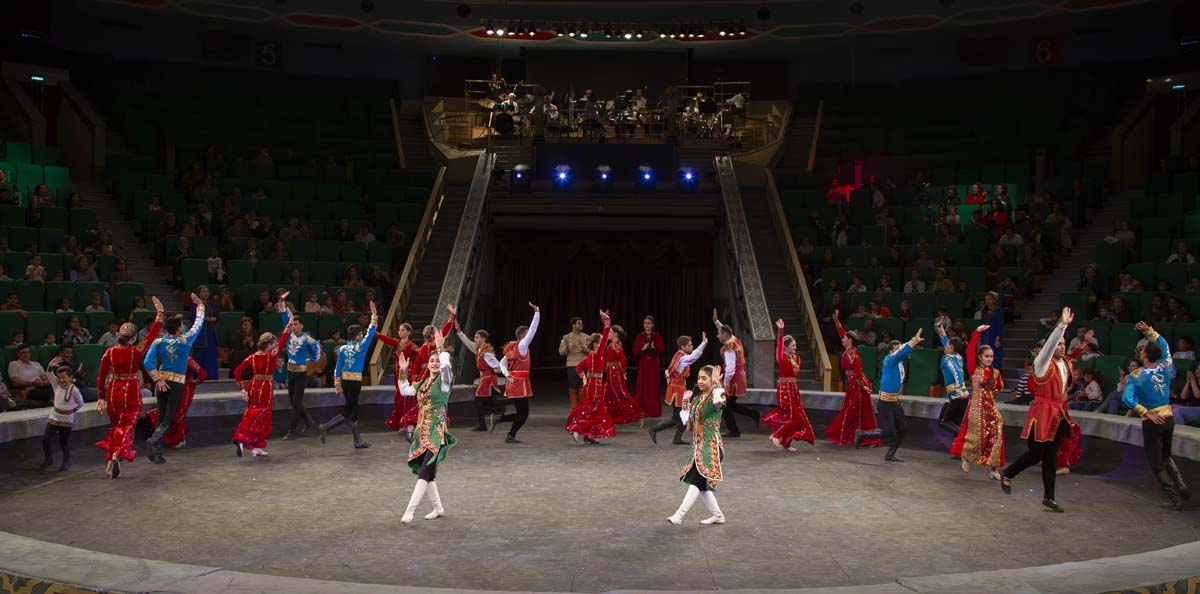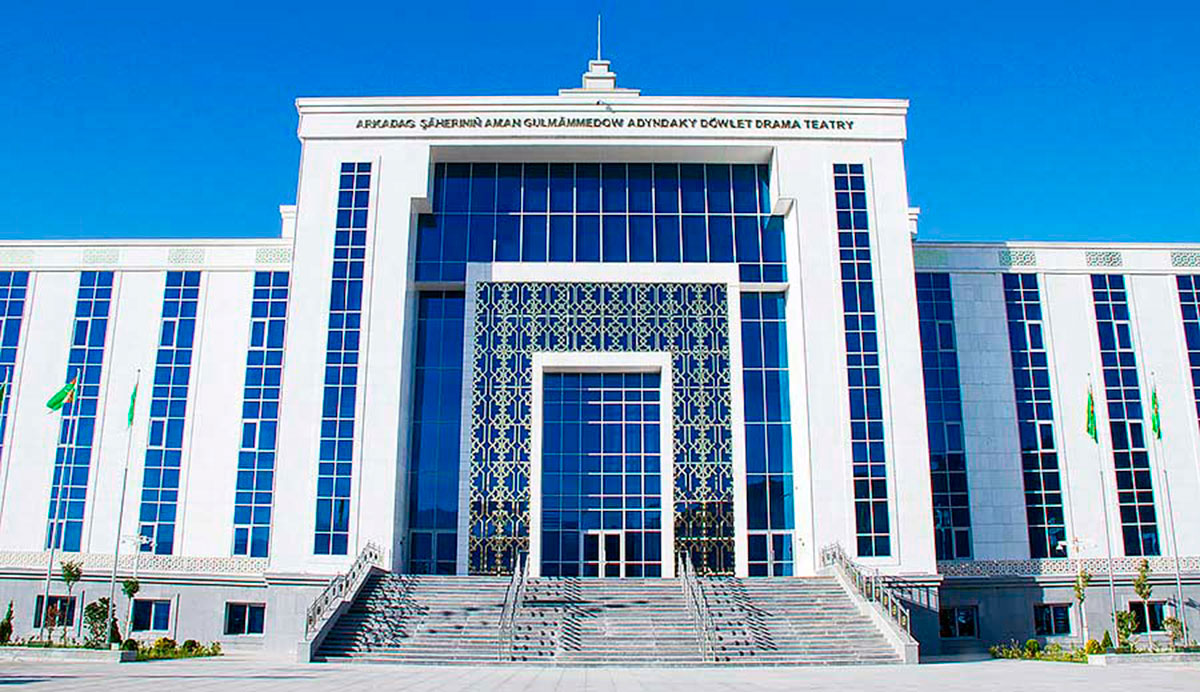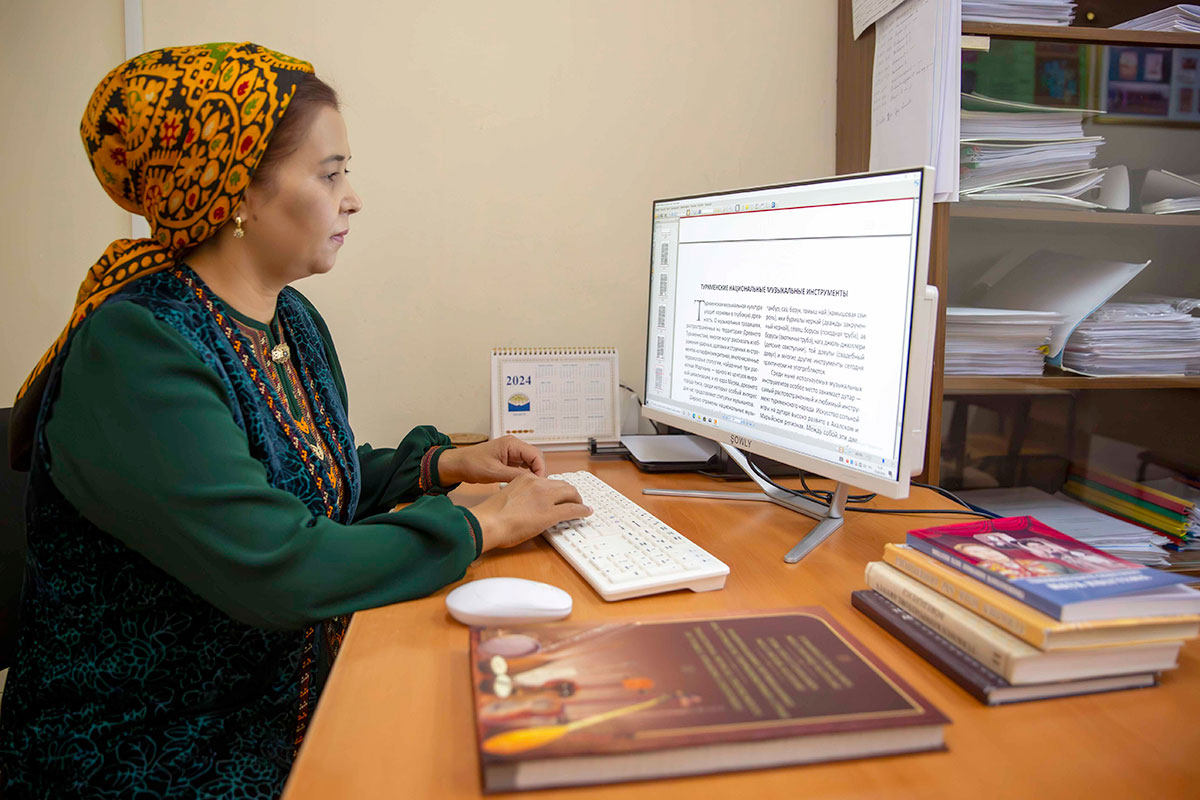An extraordinary exhibition of arts and crafts has been launched at the gallery of the State Academy of Arts of Turkmenistan. It resembles a sonorous and crowded oriental bazaar, where there is everything your heart desires. The idea of demonstrating national arts - ceramics, embroidery (el keshte), carpets, jewelry, national costume, folklore performance, etc. belongs to the Ministry of Education. The purpose of the exhibition is to preserve the cultural heritage created over the centuries by our hardworking and talented ancestors.
The exhibition at the academy turned out to be so grandiose that we needed a guide, who agreed to become the head of the department of art history Aidzhan Kadyrova.
- In order to make it more convenient to show the arts and crafts of our people, - she says, - it was decided to divide the space of the gallery into two parts: women's and men's. In principle, this is justified by the fact that in the old days each type of folk art had a clear gender identity, which is easy to see when you get acquainted with the expositions of the exhibition.
The female half is opened by an exposition with a white yurt presented to visitors in a section. Half of the yurt is used to simultaneously demonstrate the way of life of the Turkmen.
Girls, sitting comfortably in a yurt, diligently embroider amazing patterns to decorate their outfits. Turkmen embroidery plays a significant, if not the main role in the beauty of a women's costume. Both in carpet weaving and embroidery, ancient patterns are used that have sacred signs associated with the surrounding world of our ancestors. Of great importance is the choice of thread color. It should organically fit into the color scheme of the fabric of the dress. Ene was just telling the girls about this. The role of ene, which is also played by a student, has a mentoring purpose. A woman with great life experience transfers her knowledge not only to her “daughters”, but also to all visitors who are interested in original Turkmen embroidery.
Next to the yurt, a group of women "conjure" over the creation of a felt felt from sheep's wool. Women, and students of the academy act in their role, visually perform the entire process of felting. If desired, visitors can also take part in this difficult, but very exciting business. See and try for yourself - this principle is used in almost every exposition. This is a kind of master class.
The type of ancient art of wood carving is presented on the example of the manufacture of the Turkmen dutar, which is the subject of the spiritual value of the Turkmens. You can understand how the dutar is born from a master class on its production, and about how it sounds - just listen to the singing and playing of the third-year student of the academy Sap Durdyliev.
Jewelry art is represented mainly by exquisite equestrian utensils - harnesses, breast decorations made of silver with gilding. Since ancient times, only men were engaged in jewelry art. It is now women who work with zergers on an equal footing and, by the way, are doing very well.
A potter with a potter's wheel in front of the audience makes a clay vase. Each of the visitors can continue this process, but not everyone will get a vase.
Impressive models of palaces of medieval architecture, past which once loaded caravans and tired travelers of the times of the Great Silk Road passed, are Amul, Astana Baba, Sultan Sanjar Mausoleum, Anau Mosque. Among these models, you involuntarily imagine yourself as a medieval caravaneer.
Next to it is a huge chessboard with massive pieces made by the hands of students of the academy. One of the representatives of this exposition tells about the ancient intellectual game, which, thanks to the Great Silk Road, spread to many countries. The pride of our people is Abu Bekr al-Suli, a famous Turkmen chess player of the 7th century. He won victories in international tournaments and left his mark in this game - one of the moves in chess is named after him.
And the men's half of the exhibition ends with an exposition of a modern family hearth, where yashuli, drinking green tea, read aloud to their grandchildren Gurbanguly Berdimuhamedov's book "Tea - Medicine and Inspiration". Fragrant green tea in the summer heat quenches thirst and invigorates incomparably better than newfangled sweet flavored drinks, concludes the grandfather.
The exhibition, deployed in the gallery of the Academy of Arts, will continue to work in the interuniversity competition of arts and crafts, which will be held at the Turkmen Music and Drama Theater named after Makhtumkuli.




